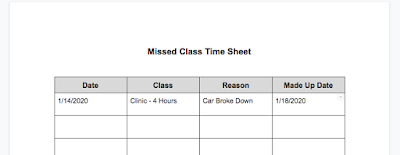This post was originally published in October 2014 on a now-defunct version of this site. It has been edited for clarity, but the tone is... more like the bright-eyed, 26-year-old massage school graduate that I once was.I was younger then, and full of hope.

My mom, Laurel; me in my high school graduation cap and gown; and my dad, David.
I graduated high school in 2006, and I remember very keenly all the buzz and options that surrounded the question, “What will you be doing after high school?”
College wasn’t exactly my dream, but I figured it was expected of me: my mother had her Bachelor’s and my dad was on his way to earning his second doctorate shortly before he passed away. I had a lot to live up to! I was in the top 10% of my class!
Well. My experience with my one year of private, out-of-state college did not go so smoothly. I’m still paying for it in many ways, including financially.
One of my passions right now is talking to teenagers about going into massage therapy. Like anything else, it has it upsides and down, so let me quickly go through them:
The Best Things About Massage Schooling
— Timing. My program was 600-hours long. I could choose between going full time, 8:00-5:00, a few days a week, and finish it within six months — or I could go part-time, in the evenings, and spread it out within a year. I went with the latter because I had my kiddo during the day and family could watch him at night. Some programs require 900-hours or more, so it’ll take you a little bit longer. It’s still better than having to wait four+ years for a piece of paper that says, “Hey, I know stuff! (You should hire me!)” Which leads me to...
— Certification. As soon as you graduate your program and get your state licensing and insurance and whatever else your state might require, you’re all set to start working as a massage therapist. The sooner you start working, the sooner you can start socking away money to pay your student loans. Speaking of...
— Cost. When I went, it was just over $13,000 for those 600-hours, and it paid for my tuition, books, and my own portable massage table. My school was federally accredited, so I qualified for Federal Stafford Loans. The school also provided private funding. Compare the cost of this program to one year of private college — even some in-state, public colleges can get pricey.
The Not-So-Great Things About Massage Schooling
— Portability. This has less to do about the schooling itself and more to do with the varied standards throughout the country. Unfortunately, because I only received 600-hours of schooling, I can’t practice in, say, New Hampshire, because they require more than that. To get around this, you could look into taking the MBLEx, which costs money for taking it (and retaking it if you fail) and isn’t recognized by all 50 states at this time.
— Dealing With Clients. You will meet all sorts of people from all walks of life. They will have varying hygiene practices and standards and you are likely to see them in varying states of undress. Some will be demanding; others will fall asleep. Yes, you will probably have to deal with at least one inappropriate client. Yes, some clients will get erections at inopportune times, and yes, sometimes other clients will fart when you’re working on their backsides. If you’re uncomfortable with nudity or natural bodily functions and hair, massage therapy may not be for you.
— Travel & Living. I was lucky in that my massage school was a half-hour away from where I was living, I had reliable transportation, and I had low-cost childcare. You might have to do some research to find a school that is close to you that best meets all of your needs. The ones I know of in Maine don’t offer on-campus housing; a few students I knew during my training actually stayed in a nearby hotel because driving home every day would have been too much.
— Other Costs. You’re going to have to buy linens, your own lotions and supplies, and possibly invest in Continuing Education after you graduate. Maine doesn’t require CEUs, but other states do; it’s just a good idea, anyway, so as to keep your work fresh and to help you learn new techniques and modalities.
There are two big prerequisites for attending the massage school I chose: you have to be 18 or older, and you have to have your high school diploma or GED. The rest is just gravy — writing skills and knowledge of anatomy and physiology will be a big help. CPR and first aid training is not only helpful, it's required for graduation and certification in Maine. Get massages: keep track of your "why" for going into massage therapy and what things you would do differently.
If you ever have any other questions about getting into massage school or massage therapy as a career, definitely get in touch with me! It’s something I could babble about for hours.
(Oh, and if you’re out of high school but you’re thinking about trying massage therapy? That’s totally cool, too. High-five!)
(2020-Bethany adds: ... For reference, this photo is 2014-me with my son and my mom.)






